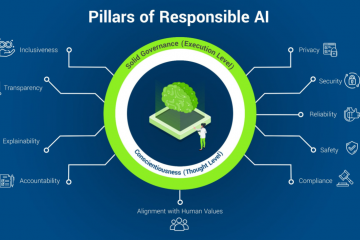In today’s data-driven business landscape, the success of integration projects hinges on the quality of data being integrated. Poor data quality can lead to flawed insights, inefficient processes, and ultimately, misguided decisions. To help organizations maintain high data quality standards throughout their integration initiatives, we’ve compiled a list of best practices that are crucial for success.
Comprehensive Data Assessment
Before embarking on any data integration project, it’s essential to conduct a thorough assessment of all data sources. This involves creating an inventory of databases, APIs, flat files, and cloud storage systems1. Employ data profiling tools to analyze the quality, completeness, and consistency of data across these sources. This initial step helps identify gaps and inconsistencies, laying a solid foundation for the integration process.
Establish Strong Data Governance
Implementing robust data governance policies is crucial for maintaining data integrity and security throughout the integration process. Develop comprehensive guidelines that cover data security, privacy, and usage1. Appoint data stewards for each data source to oversee quality and ensure adherence to these policies. Implement role-based access controls to restrict sensitive data access to authorized personnel only, enhancing overall data security.
Implement Data Validation and Cleansing Processes
Maintaining high data quality is paramount for successful integration. Implement validation rules to ensure data accuracy and completeness during the integration process1. Utilize data cleansing tools to correct errors, remove duplicates, and standardize data formats. Define and monitor key data quality metrics such as accuracy, completeness, and timeliness to maintain high standards. Set up automated continuous monitoring to detect and address data quality issues in real-time.
Choose the Right Tools and Techniques
Selecting appropriate tools and techniques is crucial for effective data integration. Consider factors such as data governance support, performance optimization features, scalability, and compatibility with existing systems5. Prioritize tools that offer robust data quality management capabilities, such as FirstEigen’s DataBuck, to ensure that only high-quality data flows through your integrated systems2.
Conduct Thorough Testing and Validation
Rigorous testing and validation are essential throughout all phases of the integration process. Adopt a phased testing approach, starting with unit testing of individual components, followed by integration testing to confirm proper interaction between components4. Conduct system testing and user acceptance testing to ensure the integrated solution meets business requirements. Finally, perform load testing to verify that the system can handle expected data volumes.
Implement Real-time Monitoring and Continuous Improvement
After implementation, ongoing monitoring and continuous improvement are crucial. Use real-time monitoring tools to track data flows, system performance, and potential errors as they occur1. Implement alert systems to notify relevant stakeholders of any integration issues or anomalies. Conduct regular audits to review data quality, security, and compliance with governance policies. This proactive approach helps maintain the integrity and effectiveness of your data integration efforts.
Ensure Effective Collaboration and Communication
Successful data integration projects require effective collaboration and communication among all stakeholders. Organize regular meetings, maintain clear documentation, and foster a collaborative approach to problem-solving1. Engage all relevant teams early and often to ensure alignment and work towards common goals.
Leverage AI and Machine Learning
Integrating data validation methods into AI systems can significantly enhance data quality efforts. By embedding automated validation within your data and AI tools, you can perform rapid quality checks and accommodate more complex validation rules6. This integration can reduce error rates and improve overall data handling efficiency.
Start Small and Scale Gradually
When tackling data quality in integration projects, it’s often beneficial to start small. Begin by focusing on one type of data or data used for a specific operation7. This approach allows you to achieve tangible improvements within budget constraints and gain support from user communities who can see immediate benefits in data accuracy and completeness.
Automate Data Validation Processes
To ensure consistency and efficiency in data quality management, automate validation tasks wherever possible9. Automation reduces the risk of human error and allows for more frequent and comprehensive quality checks. Implement automated test cases at each tier of your data integration framework to support data accuracy and integrity throughout the process.
By adhering to these best practices, organizations can significantly improve the quality of their integrated data, leading to more reliable insights, efficient operations, and better decision-making. Remember, the success of your data integration project ultimately depends on the quality of data flowing through your systems. Investing time and resources in ensuring data quality will pay dividends in the long run, enabling your organization to fully leverage the power of integrated data in today’s competitive business environment.



0 Comments